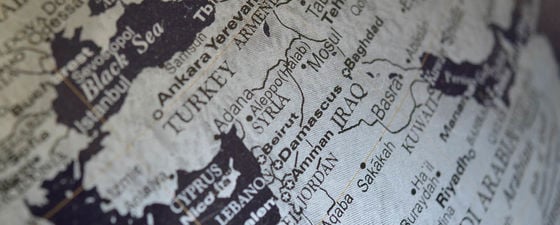Doubling hydrocarbon production in 2022 as the giant Miran-Bina Bawi project ramps up.
The Future of Gas Production in Iraq
The development of gas gathering and processing infrastructure in Iraq is picking up as the country focuses on boosting natural gas output by cutting flaring volumes. Iraq is nurturing partnerships with IOCs to achieve its gas production goals and reverse recent trends that have seen the process derailed by sanctions, geopolitical conflicts and a lack of incentives for international operators.
An increase in Iraq’s gas production of 23 MMcm (812 MMcf) per day is expected from the start of 2018 to year-end 2022, with the additional output to be used primarily for domestic fuel and power consumption. After 2022 the output is expected to grow even more as the giant Miran-Bina Bawi project ramps up.
Iraq gas production, split by major projects; Basra Gas Project, Pearl Project and the Miran-Bina Bawl Project. Source: Rystad Energy Ucube, research and analysis
Iraq produces just 31.2 MMcmpd (1.1 Bcfpd) of gas but has close to 3.1 Tcm (109.5 Tcf) of proved gas reserves, giving it the 11th largest reserve base in the world. A majority of this is associated gas and, due to insufficient infrastructure, most produced gas is currently flared. The recent spike in gas flaring volumes – from 40 MMcm (1.4 Bcm) per day in 2014 to 50 MMcm (1.8 Bcf) day in 2016 – mirrors the pronounced rise in oil production from 3.4 MMbopd in 2014 to the current 4.5 MMbopd.
Among recent developments, on 8 January 2018, Sonatrach and Orion both agreed with the Iraqi government to invest in developing Iraqi gas and processing infrastructure. Orion and the government have reached an initial agreement on boosting gas output from the Nahr Bin Umar field, which currently produces close to 40,000 bopd and 700,000 cmgpd (24.7 MMcfgpd). Sonatrach’s investment is expected in the Basra province, where two-thirds of the country’s oil output is currently produced.
Additionally, Gazprom brought online a 1.6 Bcm (56 Bcm) gas processing plant at the Badra field last month. It can provide enough fuel to produce a total of 123.5 MW of power.
In another move, Iraq recently announced that associated gas from the North Rumaila field will be exported to Kuwait by Basra Gas Company (BGC). BGC also processes gas from the West Qurna-1 and Zubair oilfields at the North Rumaila NGL plant and the Khor Al Zubair NGL and LPG plant. These facilities have nameplate capacities of 19.25 and 19.82 MMcmpd (680m and 700 MMcfpd), respectively. The plants require extensive repairs after the 2003 conflict, but work has been stalled of late by the economic downturn. This in turn limited production to just 19 MMcm (670 MMcf) per day. Repair work could be accelerated by Shell’s recent decision to shift its investment focus in Iraq away from its own upstream business in order to prioritise its 44% stake in BGC. The state-run South Gas Company holds 51% and Mitsubishi the remaining 5%.





